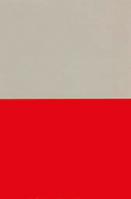Chainsaw manufacturer Stihl loses right to colour mark
A recent Board of Appeal decision confirms, despite change in ‘graphic representation’ requirements under EUTMR, Sieckmann criteria remains in play. This case concerns Andreas Stihl AG & Co. KG (Stihl), a leading German chainsaw manufacturer since as early as 1971, and Giro Travel Company (Giro), a Romanian importer of chainsaws.
Background
In 2008 Stihl applied for a colour mark (shown below) covering class 7 “chain saws”.

The mark claimed the colours orange and grey and included the description “The colour orange is applied to the top of the housing of the chainsaw and the colour grey is applied to the bottom of the housing of the chainsaw”. In 2011 the mark was successfully registered on the basis of acquired distinctiveness through use.
In 2014 Giro imported around 2,000 counterfeit chainsaws into Romania with similar characteristics and colour scheme to that used by Stihl. Stihl launched a civil law suit against Giro in Romania claiming infringement of its EUTM registration.
In response to the infringement action Giro challenged the validity of Stihl’s EUTM on the basis of Article 7(1)(a), (b) and (d), concerning the representation of the mark, lack of distinctive character and the sign was customary in the trade, along with a claim under bad faith.
The Cancellation Division rejected the invalidity action finding the graphic representation in conjunction with the verbal description enabled a systematic arrangement to be identified in which colours are used in a predetermined and uniform way. It was found despite the colour mark being shown used in conjunction with the word mark “STIHL”, following the findings in “Have a break” (C-353/03) this use did not exclude the colour mark acquiring distinctive character. The Cancellation Division dismissed Giro’s action in its entirety and Giro appealed to the Board of Appeal.
Board of Appeal decision
The decision focused on the graphic representation claims. The Board of Appeal set out that it is apparent from Article 4 and case law that graphic representation must enable the sign to be represented visually, particularly by means of images, lines or characters, so that it can be precisely identified. It was also stated that the acquired distinctiveness of a sign was not able to override the requirements set out in Article 4.
The Board of Appeal referred to previous CJEU findings in the Heidelberger case (C-49/02) which set out requirements where a sign consisted of a combination of two or more colours. In such instances the colours must be presented in a specific arrangement or layout, associating the colours in a predetermined and uniform way to prevent numerous different combinations of those colours.
When considering the representation of the mark and description, the Board of Appeal found it was confined to indicating that one colour was applied to the top of the chainsaw housing and the other colour was applied to the bottom housing of the chainsaw. This meant the graphic representation of the contested mark was the mere image of two colours without shape or contour, except for the fact the colour orange was always applied to the top housing of the chainsaw. The mark therefore allowed for several different combinations of the two colours.
The Board of Appeal noted that the contested decision took into account that at the time of filing the EUTM Stihl had made reference to an International Registration which depicted an image of a chainsaw in the relevant colours. The Cancellation Division had found this additional documentation submitted at the time of filing the EUTM enabled a systematic arrangement to be identified in which the colours are used in a predetermined and uniform way. However, the Board of Appeal confirmed references to another mark or other documentation in this manner cannot be used to justify an application meets the requirements under Article 7(1)(a) as they would not be visible on the Register or at publication.
The Board of Appeal concluded the depiction of the colour mark combined with its description was not clear, precise, self-contained, easily-accessible, intelligible or objective. Further, it found as there existed numerous different shapes of chainsaws on the market it is not clear what the scope of protection of the mark actually would be.
It was held that where a mark consists of a combination of colours its description must show the precise shades of colour, the ratios and their spatial arrangement.
As the contested EUTM was insufficiently precise in this manner the Board of Appeal found it was registered contrary to the provisions of Article 7(1)(a). The appeal was upheld and the EUTM declared invalid.
In short
This case confirms despite the change in 2015 to remove the “graphic representation” requirement, the Sieckmann criteria of “clear, precise, self-contained, easily accessible, intelligible, durable and objective” remains relevant for colour marks.
Case details at a glance
Case title: Giro Travel Company vs Andreas Stihl AG & Co KG (R200/2017-2)
Date heard: 23 January 2018
